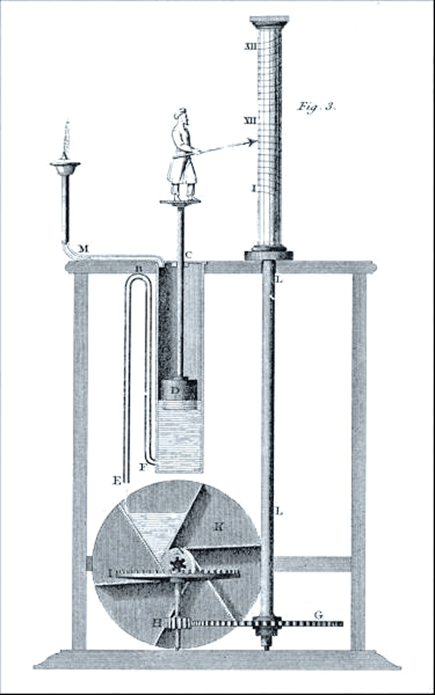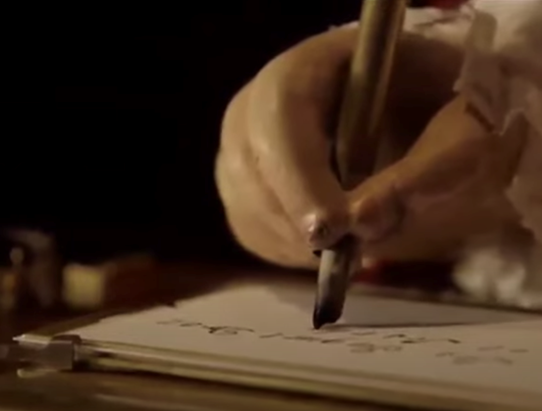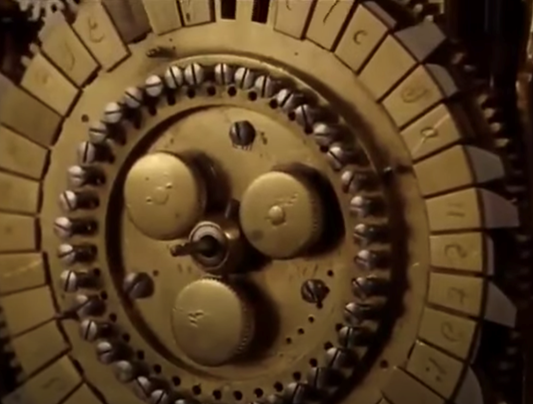A FACT360 BLOG SERIES – PART 8

Professor Mark Bishop,
FACT360, Chief Scientific Adviser
[email protected]
FACT360’s Chief Scientific Adviser, Professor Mark Bishop returns to take a more detailed look at some of the concepts outlined in the ‘The Science of AI’ series (read the first post here). The next three posts examine the ‘Mechanics of Computation’, beginning here with a look at automata…
The forerunners of today’s ‘machines that compute’ are engines that can autonomously perform a sequence of actions, automata. Simple automata are merely capable of repeating a hard-engineered, specific sequence of actions whilst more advance automata can sequence a user-defined program of actions. In this blog I will examine two important automata in the history of computation, beginning with a very simple device which can only perform a single behaviour, the ancient Greek Clepsydra, before moving to examine L’Ecrivain (‘The Writer’), a machine which was capable of being programmed to execute a range of user-specified writing behaviours. Over time, the evolution of ever more complex automata led to the development of theoretical computational machinery: from Charles Babbage’s putative mechanical ‘Analytical Engine’, to the Turing Machine, which eventually led to the realisation of the modern, digital, electronic computer.
The word ‘automata’ derives from the Greek word αὐτόματα, meaning ‘acting of one’s own will’. Automata were carefully designed to give the illusion of acting of their own volition, despite being mere mechanical systems and, typically, were constructed to depict human or animal figures in motion. In Ancient Greece, engineering was sufficiently advanced to build automata that would realise a single, pre-engineered behaviour.
The water clock, or clepsydra, was originally a very simple machine; a container with an aperture through which water flowed, emptying over a known time span and hence ‘measuring time’. The basic mechanism was subsequently refined by Ktesibios, a Greek engineer. His key invention was to add water wheels and floats to the basic device, to drive a further mechanism in which water dripping at a constant rate also raised a float that moved a pointer, marking the passage of the hours (see Figure 1).

Although still simple, the enhanced behaviour of Ktesibios’ clepsydra was of significant practical use, enabling the devices to be used as rudimentary `timed alarms’ and `stop-watches’. Indeed, the mechanism was so successful that it was only made obsolete in the 17th Century with the invention of the pendulum clock. Clearly, instilling artefacts with a specific sequence of behaviour was within the reach of engineers of antiquity; the greater challenge was to instil a single artefact with the capability to produce a variety of complex behaviours.
Inspiration for the development of Automata during the middle ages was, in part, thanks to the French philosopher and mathematician Rene Descartes, who suggested that the bodies of animals were no more than complex machines, whose internal organs could be recreated via such mechanical instruments as cams and pistons. According to Descartes all organisms, including the human body, are automata. Nature, ‘res extensa’, according to Descartes, has made animals act only according to the disposition of their own bodies, just as a mechanical clock operates only due to the weights and pulleys, springs, and wheels of its physical makeup:
“. . . [I]t is nature which acts in them according to the disposition of their organs. In the same way a clock, consisting only of wheels and springs, can count the hours and measure time more accurately than we can with all our wisdom”
Descartes’s Discourse on Method, Part V
Conversely, Descartes made an exception for the human soul, ‘res cogitans’, which is not part of the material world and therefore is not governed by laws of nature, but which animates the body (via an interface he postulated located in the pineal gland); for Descartes, it is the immaterial soul that accounts for human free will.
The Writer, a programmable machine about 70cm in height, when wound up with a crank is capable of writing phrases up to 40 characters long. The machine deploys a goose feather quill, which the machine ‘inks’ from time to time from a well, including a delicate ‘shake of the wrist’ to prevent ink from spilling from the pen onto the page. The Writer’s eyes follow the text being written, and his head moves when he takes some ink.

Pierre Jaquet-Droz was a Swiss-born watchmaker and one of the greatest automata designers to have ever lived. Droz designed and built ‘The Writer[1]’ around 1770 (with help from his son Henri-Louis and Jean-Frédéric Leschot), and the machine has widely come to be considered his finest creation. From the outside ‘The Writer’ looks deceptively simple: a small, barefoot boy sits at a wooden desk holding a quill, and might be mistaken for a toy doll. But inside is crammed an engineering marvel: 6,000 custom-made components are woven together to realise a fully self-contained programmable writing machine. Each of the parts of ‘The Writer’ has been carefully designed, and then miniaturised, to fit inside the small body of the automaton, alongside the clockwork ‘engine’ that powers its movements; in this sense ‘The Writer’ is truly an automaton in that, once cranked into action, it writes ‘autonomously’ of human input.

At The Writer’s core is a large stack of cams. As the cams move, cam-followers trace their edges and translate this outline into the complex three-dimensional movements of The Writer’s arm precisely, so controlling exactly how much pressure is applied to the quill and how The Writer’s script is realised on paper. The wheel that controls the cam-stack holds forty letters, each of which can be removed, replaced and re-ordered, in principle, enabling ‘The Writer’ to be programmed to pen any forty-character phrase.
Nonetheless, although ‘The Writer’ could be programmed to produce a large number of distinct behaviours contingent on its input (circa 2640 sentences), its operation remained insensitive to conditionals; IF the-ink-well-was-dry then the machine would blindly continue to scratch colourless marks on the parchment; IF there-was-no-parchment-present then the machine would continue to blindly write on the surface of its desk etc. The key computational concepts of conditional execution {IF this THEN that ELSE the-other}, loops and memory, and hence the theoretical capability to realise Turing-completeness, would have to wait until Charles Babbage and the Analytical Engine.
Professor Mark Bishop is FACT360’s Chief Scientific Adviser and to see how these leading-edge scientific techniques can be applied in your organisation download our White Paper “The Science of FACT360”or get in touch [email protected].
[1] A brief BBC video of ‘The Writer’ at work, from which the two stills were taken, is at: <https://www.youtube.com/watch?v=laJX0txJc6M&t=1s>
